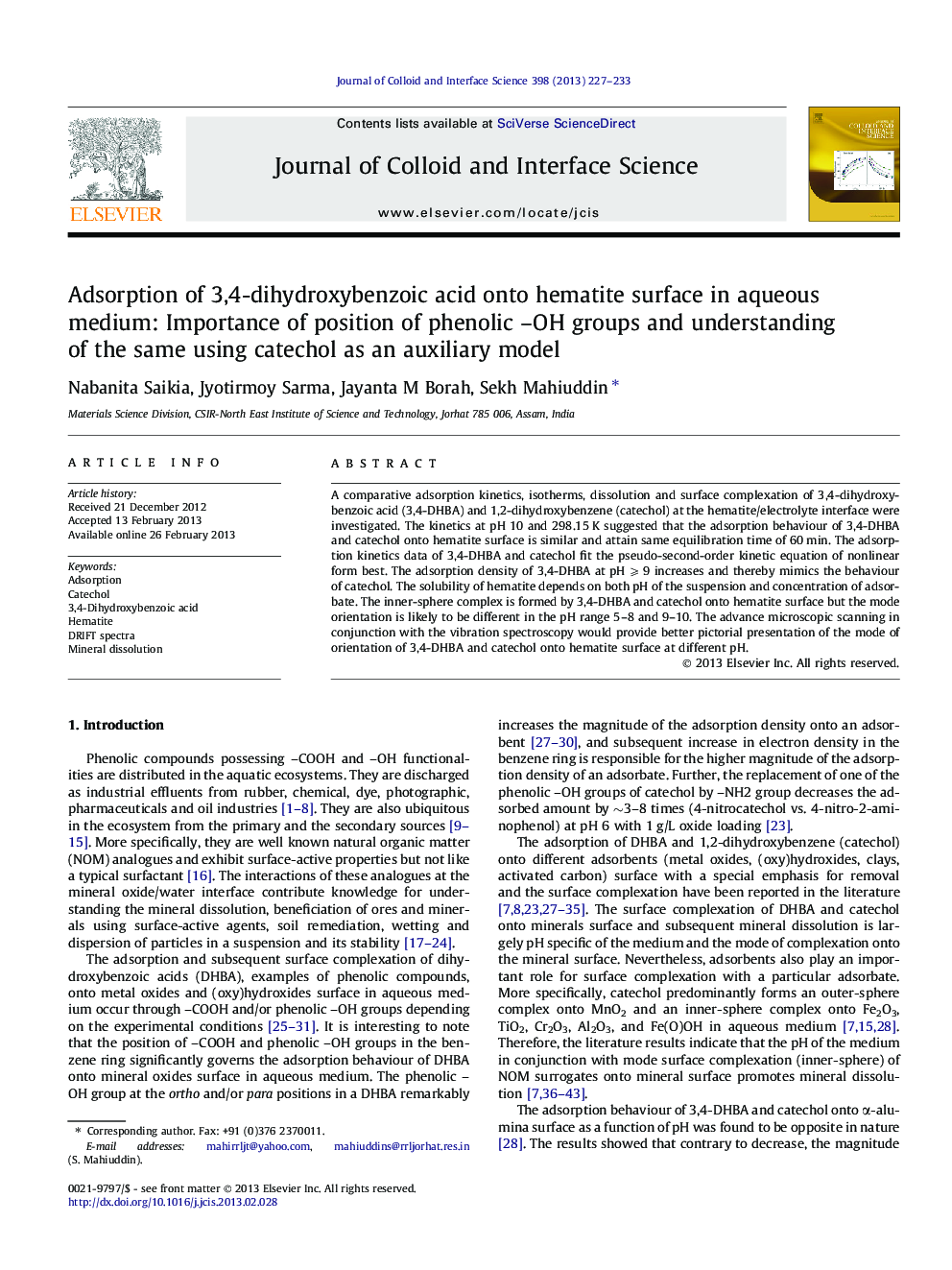| Article ID | Journal | Published Year | Pages | File Type |
|---|---|---|---|---|
| 607887 | Journal of Colloid and Interface Science | 2013 | 7 Pages |
A comparative adsorption kinetics, isotherms, dissolution and surface complexation of 3,4-dihydroxybenzoic acid (3,4-DHBA) and 1,2-dihydroxybenzene (catechol) at the hematite/electrolyte interface were investigated. The kinetics at pH 10 and 298.15 K suggested that the adsorption behaviour of 3,4-DHBA and catechol onto hematite surface is similar and attain same equilibration time of 60 min. The adsorption kinetics data of 3,4-DHBA and catechol fit the pseudo-second-order kinetic equation of nonlinear form best. The adsorption density of 3,4-DHBA at pH ⩾ 9 increases and thereby mimics the behaviour of catechol. The solubility of hematite depends on both pH of the suspension and concentration of adsorbate. The inner-sphere complex is formed by 3,4-DHBA and catechol onto hematite surface but the mode orientation is likely to be different in the pH range 5–8 and 9–10. The advance microscopic scanning in conjunction with the vibration spectroscopy would provide better pictorial presentation of the mode of orientation of 3,4-DHBA and catechol onto hematite surface at different pH.
Graphical abstractFigure optionsDownload full-size imageDownload high-quality image (183 K)Download as PowerPoint slideHighlights► Adsorptivity of 3,4-DHBA and catechol onto hematite was investigated. ► At pH ⩾ 9, adsorption isotherms of 3,4-DHBA and catechol are nearly similar. ► In pH range, 5–8 catechol showed bilayer adsorption, and at pH ⩾ 9, it is monolayer. ► Hematite solubility depends on both suspension pH and adsorbate concentration. ► Orientation of 3,4-DHBA and catechol onto hematite may be different and pH dependent.
